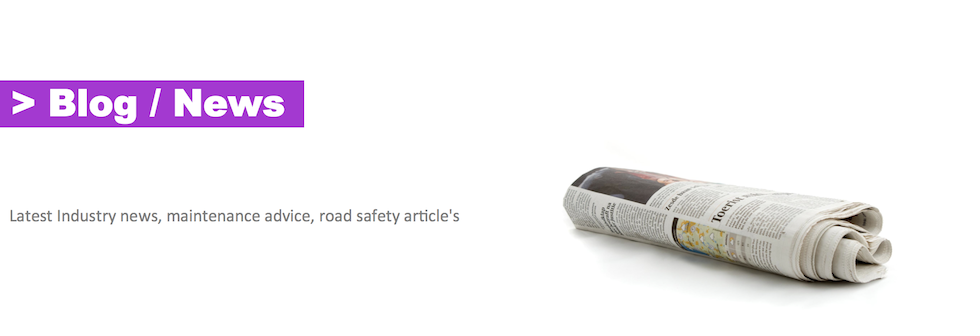Smart car buyers guide

Contents
Buying a used car . . . . . . . . . . . . . . . . . 5
Find out what your vehicle’s warranty is, the cooling-off period you are entitled to and how to make sure the title is clear.
Buying a new car . . . . . . . . . . . . . . . . . . 13
Understand the contract of sale, the total cost of the purchase and warranty conditions. Remember there is no cooling-off period when you buy a new car.
Auctions . . . . . . . . . . . . . . . . . . . . . . . . .17
Buying a vehicle at auction is very different to buying from a dealer. Remember you don’t get the protection of a cooling-off period. You usually won’t be able to test drive the vehicle.
Repairs . . . . . . . . . . . . . . . . . . . . . . . . . .19
Always get at least two written quotes, explain the problems clearly and make sure no repairs are done without your approval.
Maintenance . . . . . . . . . . . . . . . . . . . . . 24
Keep you car safe and protect its resale value by having regular safety checks and regular maintenance.
|
|
Buying a used car |
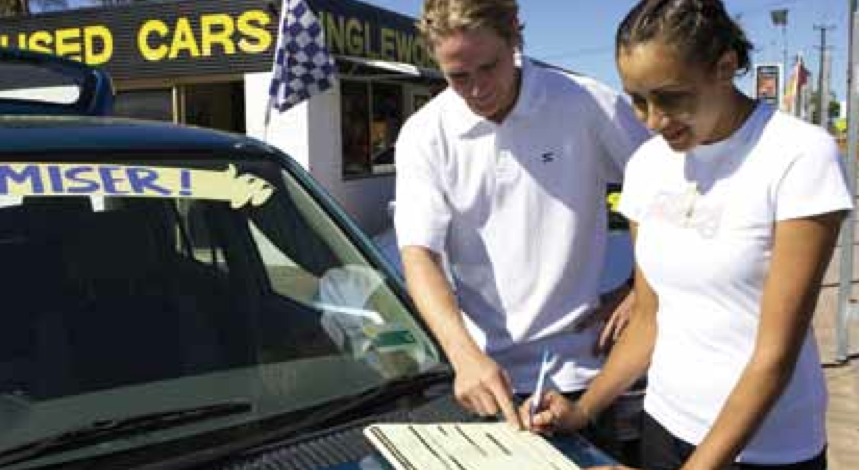
Warranty
When you buy a second-hand vehicle from a licensed motor dealer you are, in most cases, entitled to a ‘mandatory statutory warranty’. This warranty protects you from financial loss if the vehicle is faulty. There are two types of statutory warranty: • Class A warranty When the odometer reading is less than 160 000 km and the car was manufactured less than 10 years before the sale date, the warranty is three months or 5000 km, whichever happens first. 5 |
• Class B warranty
When the odometer reading is 160 000 km or more, or the car was manufactured 10 years or more before the sale date, the warranty is one month or 1000 km, whichever happens first.
You are also protected by ‘consumer guarantees’. Visit www.fairtrading.qld.gov.au to find out more.
Defects not covered by a statutory warranty
Statutory warranties do not cover any defect in a vehicle’s:
-
tyres or tyre tubes, batteries, fitted airbags, lights other than a warning light or turn indicator light used as a hazard light, or radiator hoses
-
installed radio, tape recorder or CD player
-
air-conditioning system (for a Class B warranted vehicle)
-
aerial, spark plug, wiper rubber, distributor point, oil or oil filter, heater hose, fuel or air filter
-
paintwork or upholstery that should have been apparent before the buyer took delivery of the vehicle
-
accessories not fitted to the vehicle when it was sold.
Statutory warranty also does not cover any defect from accidental damage due to your misuse or negligence.
6
Vehicles offered without statutory warranty
The following vehicles do not have a statutory warranty:
-
motorcycles
-
caravans
-
commercial vehicles
-
written-off vehicles
-
vehicles being sold on consignment for a private seller
-
vehicles sold for restoration
-
an unregistered vehicle that can not be registered in Queensland because of its design.
Vehicles with no statutory warranty must be clearly identified and advertised. Auctioneers and motor dealers must place notices on the windshield or price tag, place signs at the main entrance to the premises or give them to you.
Resolving disputes
Try to resolve any problems you have directly with the dealer. Under the code of conduct, licensed dealers must establish a complaint handling process. It is a good idea to put your concerns in writing. If you are not happy with the dealer’s response to your concerns, visitwww.fairtrading.qld.gov.au to explore your options.
7
Cooling-off period
When you buy a used car from a motor dealer, you have a one business day cooling-off period.
Remember:
-
if you take possession of the vehicle during the cooling-off period, you lose your right to have a cooling-off period
-
you are allowed to take the vehicle for an independent mechanical inspection and test drive the vehicle
-
a dealer cannot refuse to grant you a cooling-off period
-
the sales contract is binding for the dealer as soon as both parties sign the contract. As the buyer, you are bound by the contract only after the cooling-off period, unless you take possession of the vehicle during that time.
Terminating a contract during the cooling-off period
If you wish to terminate a contract during the cooling-off period, give the dealer written notice before the period ends. You can email, fax or deliver the notice personally. The dealer can keep up to $100 of your deposit. They must return the rest of the money you paid and your trade-in vehicle.
8
Clear title
When you buy a vehicle, you need to know you are buying it free from any unpaid debt. Buying a vehicle that is free and clear of any debt is known as clear title.
A Personal Property Securities Register (PPSR) certificate gives you information about any outstanding debts attached to a vehicle.
For example, if a bank has given a loan to the previous owner of the vehicle, who has not yet fully repaid, the bank has a financial interest in the vehicle. The bank is legally able to repossess the vehicle if the loan defaults.
If the PPSR certificate shows any outstanding debts, make sure the previous owner clears them before you pay for the vehicle.
If the used vehicle is being sold by a licensed motor dealer or licensed auctioneer, they must guarantee clear title. They are not required to give you a PPSR certificate, but you are guaranteed clear title regardless of whether you are given a certificate or not.
If you buy from a private person, it is your responsibility to get a PPSR certificate.
To obtain information on how to get a PPSR certificate, visit www.ppsr.gov.au or call 1300 007 777.
9
Conducting vehicle checks
A search on the national Personal Property Securities Register (PPSR) will show if there are any unpaid debts, such as a car loan, recorded against a vehicle.
A search certificate can be issued after conducting a search. The search certificate may be used as evidence to prove the results contained in that search result.
You can conduct a search at www.ppsr.gov.au. If you find that there is an unpaid debt on the car, visitwww.fairtrading.qld.gov.au to explore your options.
Vehicle plate checks
Check the build plate to see the construction date of the car. Make sure the advertised year of the car is the same as its true age. The compliance plate indicates the date the car met certain Australian safety standards, making it legal to drive. This date is not necessarily the same as the manufacture date of the car and it does not indicate the year model.
Mechanical inspection
Depending on the age and cost of the vehicle, consider having an independent, professional inspection by a qualified mechanic and ask to see servicing records.
10
Buying privately
If you are not buying from a licensed dealer, take extra precautions.
Remember:
-
you do not have a statutory warranty
-
you are not entitled to a cooling-off period
-
the seller is not bound by the same laws as licensed dealers
-
you cannot access the Claim Fund if anything goes wrong (i.e. you won’t be able to make a claim for compensation of any financial loss). Visit www.fairtrading.qld.gov.au to find out more about the Claim Fund.
11
Checklist
If you buy a used car from a licensed motor dealer:
Check the warranty conditions use the cooling-off period
Ensure clear title
Do vehicle checks.
If you buy a used car privately:
-
You are not entitled to the normal protection of the cooling-off period
-
You will not get a statutory warranty
-
The seller is not obliged to give you a PPSR certificate
-
The seller is not bound by the same laws and Code of Conduct as licensed dealers
-
You cannot access the compensation Claim Fund if anything goes wrong.
12
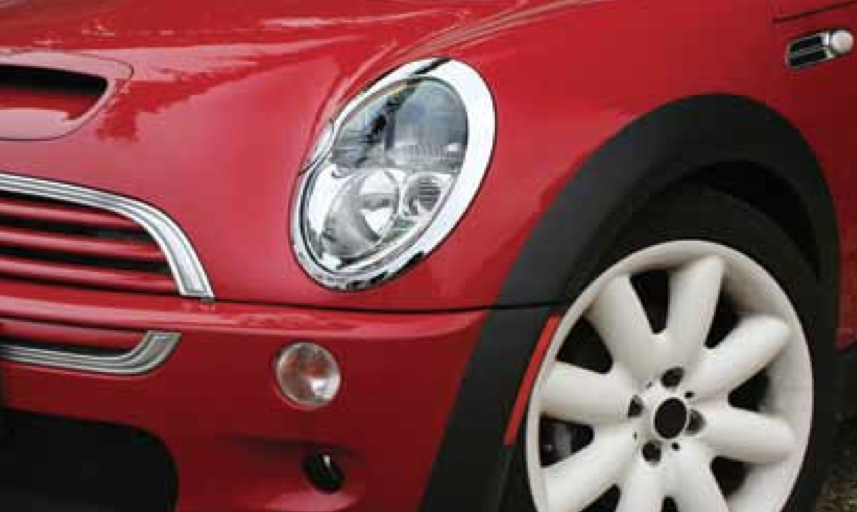 |
|
Buying a new car |
|
Contract, total cost and warranties
The contract of sale for the purchase of a motor vehicle 13 |
No cooling-off period
When you buy a new car, there is no cooling-off period. Make sure you are completely happy with the car and the contract before signing anything. A vehicle is a new car if it has never been licensed or registered. A demonstration car is not considered a new car.
Vehicle plate checks
Check the build plate to see the construction date of the car. The compliance plate details the date the car met certain Australian safety standards, making it legal to drive. The compliance date will not necessarily be the same as the build date, especially on imported vehicles. Make sure the advertised year model of the car matches its true age.
The build plate date is commonly used to value a car when you re-sell it. If you have bought a car based on its compliance date, rather than build date, its resale value could be significantly less than expected.
Negotiate the deal
As you visit each dealer, ask them to give you a firm price in writing for the model you want. Get prices from as many dealers as possible.
14
Pay a deposit
Dealers often ask for a deposit to prove you intend to
buy the car. Only pay the minimum deposit the dealer
will accept to reserve the car. Before you hand over your cash, check if your deposit is refundable, and if so, under what circumstances. Make sure you get a receipt for every payment you make.
Pre-delivery check
Do your own pre-delivery check on the vehicle. Check to see that:
-
there are no dents or chips in the paintwork
-
there are no cuts or scratches on the interior
-
any accessories or extras you have ordered have been included
-
the advertised year model matches the build plate.
Resolving disputes
Try to resolve any disputes directly with the dealer. If
you are not happy with the dealer’s response to your concerns, visit www.fairtrading.qld.gov.auto explore your options.
15
Checklist
If you buy a new car:
* Check the contract, total cost and warranty
* Remember there is no cooling-off period
* Check the dates on the compliance and build plates negotiate the best deal for you
* Pay a deposit
* Conduct a pre-delivery check
* Understand the trader’s policy for resolving disputes.
16
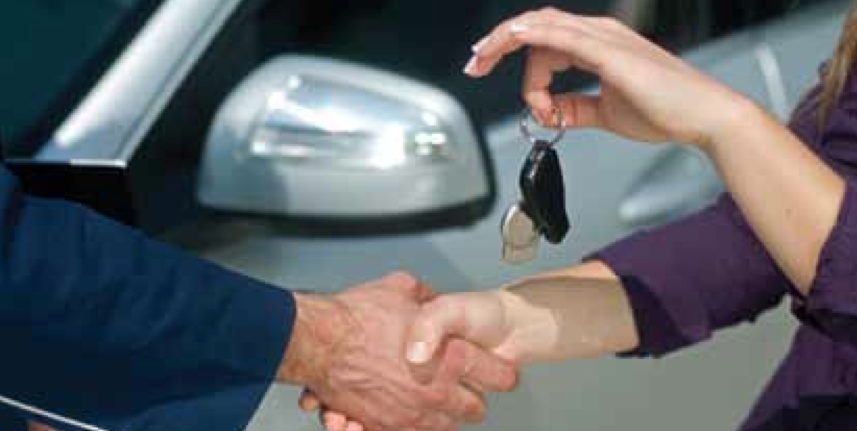 |
|
Auctions |
|
At an auction, you must be told if the vehicle:
17 |
Unless the car has been identified as an unregistered vehicle, you must also be given a safety certificate (previously known as a roadworthy certificate). Visit www.tmr.qld.gov.au to find out more about safety certificates.
When you buy a vehicle, the auction house must give you a receipt and completed transfer of registration form. Transfer of registration forms are available at http://www.tmr.qld.gov.au
Remember, once the hammer falls you can’t back out of your purchase. Carefully study the conditions of sale before bidding.
Restorable vehicle
A restorable vehicle is:
-
20 or more years old
-
for sale for restoration.
To bid on a restorable vehicle at an auction you must register yourself with the auctioneer before the auction begins. The vehicle’s statutory warranty is waived as a condition of the sale.
Resolving disputes
First try to resolve any problems you have directly
with the auction house. All auction houses must have complaint handling procedures. Then if you are not happy with the auction house’s response to your concerns, visitwww.fairtrading.qld.gov.au to explore your options.
18
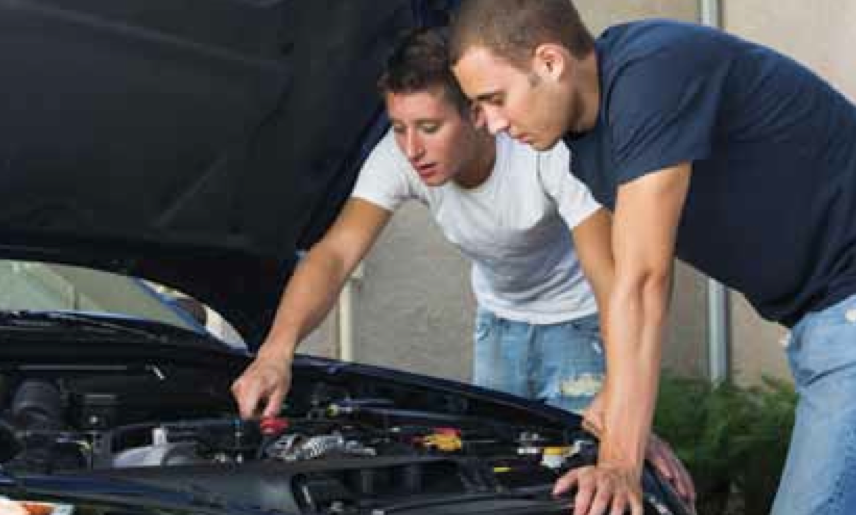 |
|
Repairs |
|
Find a reputable repairer Make sure the repairer you choose is reputable, qualified to do the job and has access to the necessary equipment. Going to the same reliable repairer each time will build up a service history for your car. It will also allow the repairer to better advise you of upcoming repairs.
19 |
Get quotes
Get at least two written quotes for any repairs or services. Estimates are often verbal and approximate, while quotes are more specific and itemise the work to be done. The quote should outline the repairs and the costs, including parts, labour and any agreements or promises given. Preparing a written quote may involve the repairer having to diagnose the fault. Check before leaving your car whether you will be charged for this.
Don’t be pressured into having a repair carried out. Ask the repairer to explain the fault clearly without using technical jargon. If you are unsure about the repairs or they sound expensive, shop around for other quotes and advice.
Explain the problems clearly
Be clear and specific when describing the problems with your vehicle to a repairer. The more the repairer knows about the problem, the more likely they will be able to find the cause and fix the problem the first time.
It’s best not to ask for specific repairs or diagnose the problem yourself. If you do ask for a specific repair and it doesn’t fix the fault, you cannot hold the repairer liable.
20
Check the payment terms
Before making a commitment to a repairer, check the terms of payment. If you are unable to pay and haven’t come to any financial arrangement, the repairer is allowed to keep your car until you do pay.
Authorise all repairs
Make sure the repairer clearly understands that they
can only do repairs that you have authorised. Any extra work should only be completed if, and when, you give the repairer permission to do so.
Get an itemised account
Before you pay for your car repairs, ask the repairer for an itemised account of all the work they have done, labour charges, parts supplied and any warranties that apply. Get a receipt and keep it with your car records. Let the repairer know before they commence work if you want any old parts returned after the car is repaired. They should be able to show you why parts were replaced.
Keep a record of repairs and services carried out on your car. These will help you with any warranty or repair disputes. If you want to sell the car, these records will show the car has been well maintained.
21
Resolving disputes
Try to resolve any disputes directly with the repairer first. Clearly discuss why you are dissatisfied with the repairs or service. If you are not happy with the response, write to the manager. You can also contact the Motor Trades Association of Queensland for advice if your repairer is a member.
If you still are not satisfied with the response, visit www.fairtrading.qld.gov.au to explore your options.
Vehicle repairs under statutory warranty
If you feel you are entitled to repairs under your statutory warranty, you cannot simply have your vehicle repaired and send the bill to the warrantor. You must take your vehicle back to the dealer and give written notice of the defect to the warrantor. The warrantor must respond within five days with instructions for getting your vehicle repairs done. Once the warrantor accepts that the defects are covered by statutory warranty, they have 14 days to complete the repairs and return your vehicle.
If your vehicle is more than 200 km from the warrantor when you give notice, you can take it to the nearest qualified repairer. The warrantor may decide to use another repairer, but they will have to pay for any delivery costs.
22
If the car dealership you bought from has been sold, the warranty on your vehicle continues to remain the responsibility of the original licensee. The new owner of the dealership is not responsible.
For every day your car is undergoing a statutory warranty repair, another day is added to your warranty period.
Checklist
If your vehicle needs a service or repair:
-
Find a reputable repairer
-
Get quotes from at least two repairers
-
Explain all the problems you are experiencing
-
Check all payment terms and conditions
-
Make it clear that only work authorised by you is to be done
-
Ask for an itemised bill
-
Understand the repairer’s policy for resolving disputes
-
Be aware of your obligations under your vehicle’s warranty.
23
|
|
|
Maintenance |
|
The Royal Automobile Club of Queensland (RACQ) has information on a range of car maintenance, design and safety issues. Visit RACQ’s website at www.racq.com.au to find out more. 24 |
Regularly service your vehicle
Regular services will help keep long-term repair costs down. They can also identify minor problems that can be repaired before they become more costly major problems. Correctly maintain your vehicle by following the manufacturer’s service schedule. A well looked after vehicle will have a higher resale or trade-in value if you choose to sell.
Checklist
If you buy a new car, check that:
-
All exterior lights are working
-
All glass surfaces are clean and free from chips, cracks
and scratches
-
The windscreen wipers and washers work properly
-
The horn works
-
The handbrake holds the car still on steep hills
-
The seat belts are in good condition
-
The tyres are in good condition and at the right pressure
-
All gauges and warning lights are working when you start the car
-
All fluid and oil levels are topped up when needed.


